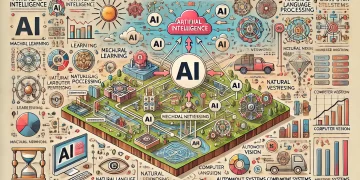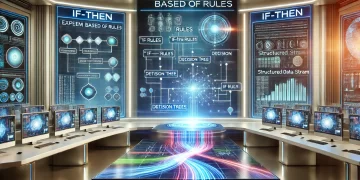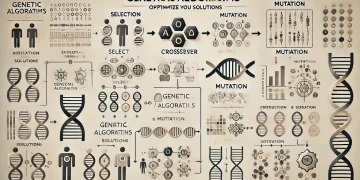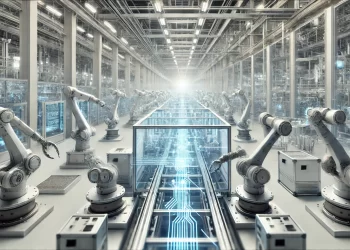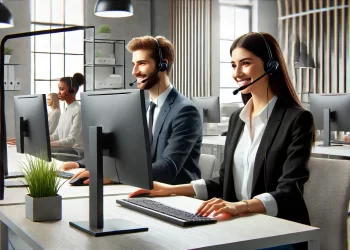Artificial Intelligence (AI) is transforming the fields of creativity and arts, offering innovative ways for artists, designers, and musicians to explore new dimensions of expression. From generative art to AI-assisted music composition, AI is expanding the boundaries of human creativity. This article explores various use cases of AI in creativity and arts, demonstrating how AI-powered tools are reshaping the creative landscape.
1. AI-Generated Visual Art
AI-powered generative models, such as Generative Adversarial Networks (GANs) and neural networks, create stunning digital artwork. Tools like Deep Dream and DALL·E analyze patterns and artistic styles to produce unique images. AI assists artists in experimenting with different styles, textures, and compositions, enabling them to push creative boundaries.
2. AI-Assisted Music Composition
AI-driven music composition tools analyze existing melodies and styles to generate new musical pieces. Platforms like AIVA and OpenAI’s MuseNet compose original music across different genres, assisting composers in creating film scores, video game soundtracks, and personalized music experiences.
3. AI in Writing and Literature
Natural Language Processing (NLP) models, such as GPT-based algorithms, assist writers in generating poetry, screenplays, and novels. AI-driven tools help writers overcome writer’s block, refine storytelling, and improve grammatical accuracy. Automated text generation platforms provide creative prompts and assist in scriptwriting and content creation.
4. AI-Enhanced Digital Design and Animation
AI tools streamline graphic design and animation processes by offering automated image enhancement, style transfer, and intelligent editing features. Software like Adobe Sensei uses AI to optimize design workflows, enabling designers to create professional-grade visuals with ease.
5. AI in Film and Video Production
AI-powered video editing tools automate tedious tasks such as scene transitions, color correction, and special effects. AI-driven facial recognition and deep learning enhance CGI effects, making films more immersive. AI also assists in screenplay analysis, predicting audience engagement based on script elements.
6. AI in Fashion and Textile Design
AI-driven design platforms analyze fashion trends and consumer preferences to generate unique clothing designs. AI-powered tools assist designers in experimenting with patterns, textures, and colors, enabling the creation of personalized fashion collections.
7. AI-Generated Poetry and Creative Writing
AI models analyze literary styles and historical texts to compose poetry and prose. AI-driven tools assist poets in generating verse structures, experimenting with rhyme schemes, and exploring new narrative techniques.
8. AI in Virtual and Augmented Reality Art
AI enhances immersive art experiences through Virtual Reality (VR) and Augmented Reality (AR). AI-powered VR platforms enable artists to create 3D sculptures and interactive installations. AI also enhances AR applications, allowing users to engage with digital artwork in real-world environments.
9. AI-Powered Art Restoration and Conservation
AI assists in the restoration and preservation of classical artworks by analyzing historical painting techniques and digitally reconstructing damaged or faded artwork. AI-powered image recognition helps conservators detect early signs of degradation and recommend restoration techniques.
10. AI in Game Design and Interactive Storytelling
AI-driven procedural content generation creates dynamic game environments and adaptive storylines. AI tools enable game developers to generate unique levels, character animations, and interactive narratives that evolve based on player choices, enhancing the gaming experience.
Conclusion
AI is revolutionizing creativity and arts by augmenting human expression, enhancing artistic techniques, and opening new avenues for innovation. From visual arts to music and literature, AI-driven tools empower creators to push artistic boundaries and explore new possibilities. As AI technology continues to advance, its integration into the arts will further redefine the relationship between human creativity and machine intelligence.
References
- MIT Technology Review. (2023). “How AI is Reshaping the Creative Arts.”
- World Economic Forum. (2022). “AI in Music, Literature, and Visual Arts.”
- Harvard Business Review. (2023). “The Future of AI-Assisted Creativity.”
- McKinsey & Company. (2023). “AI in Digital Design and Animation.”
- Deloitte Insights. (2023). “AI and Generative Art: The Next Frontier.”
- PwC. (2022). “The Role of AI in Fashion and Textile Design.”

